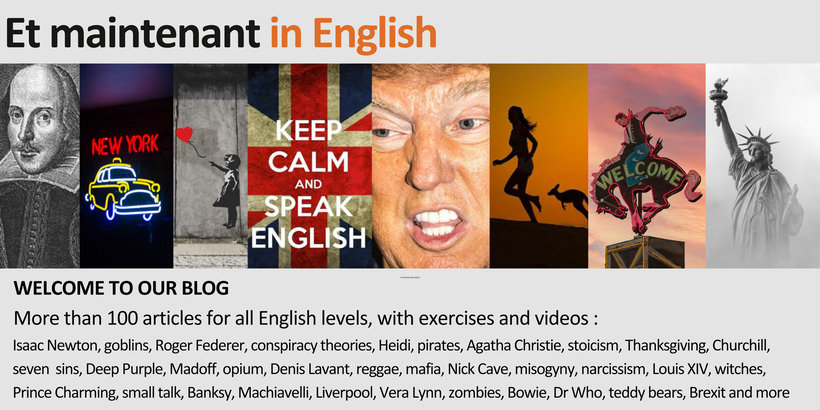Level B1 and above
Here are some more tips for writing professional emails in English. But first, some email trivia.
- With expressions related to email writing.
How many emails were sent and received in the world each day in 2017?
Yes, you’re right. A lot. A mammoth amount. If we add-in yours and mine the total comes to about 269 billion per day. There are an estimated 3.7 billion email users, and climbing. The most astounding (and scary) statistic is that on-average an office worker will receive about 120 emails per day, according to several studies. We are drowning in emails.
Understandably, the general rule is to keep your emails short. Some purists say a maximum of five sentences and you can always attach a document if you have more information to share.
You can read Ten tips for better emails in English (part one) here
- When can I change from Dear Ms Johnson to Dear Sue?
Anglo-Saxons move from formal family names to first names quite quickly. It’s part of their culture. The Swiss, in general, are a little more reserved. French mother-tongue speakers often find it difficult to judge the right moment to drop a level in formality and switch from family name to first name.
There are many factors that affect familiarity, such as jobs, positions in the hierarchy, company culture and, of course, your culture and language and that of the person receiving your emails.
Unfortunately, there are no rules. Sometimes, you can clearly sense a first-name-relationship in the friendly style of the first email or by the engaging voice on the other end of the telephone. Young people are much more open to first names. The older generation have grown up on a diet of formal letter writing, with phrases such as Je vous prie, Madame, Monsieur, de bien vouloir agréer l’expression de mes sentiments distingués, which are today viewed as olde worlde and impersonal.
Here are a few guidelines on when you can start to reduce the formality:
- If your recipient signs off with his or her first name.
- If you are on first names in your telephone conversation
- If you are basically the same age or have a similar position or are passionate about your shared interest.
- Mirror the style of your recipient. If his or her style is friendly and informal, keep your emails relatively informal.
- When a prospective client turns into an actual client it is often the right time to make the written relationship less formal. It’s a bit like welcoming them into the family.
But don’t push it. If you are not sure, play safe. Stay neutral/formal until you get a clear sign.
- Subject/title
Use the subject line to help your reader focus on the content of your email. The quicker your reader can focus on the subject the more effective he or she will be in dealing with your request. I get annoyed when I receive an email with a blank subject line.
I want to have an idea of the content just from reading the subject line. Our brains start to load relevant information if the subject line is clear and informative. Re. English course in Australia, Re. Cancellation of Nick Cave concert, Re. Student visa for New Zealand, Re. Your blog in Le Temps
- Simple terms for simple understanding
Many phrases or words are totally unnecessary and can be deleted or simplified. Be active and edit your email. Cut and slash. Rewrite. Use your delete button like a sword and kill off unnecessary phrases like these below:
- as far as I am concerned – I think, I believe
- at the present time – now
- due to the fact that – because
- for the most part – generally
- in my opinion – I think, I believe
- in the event of – if
- let me start by saying – firstly
- and I would like to finish by saying – finally
- the point that I am trying to make – I think, I believe
- what I want to make clear – I think, I believe
Remember to use active verbs:
- We need to make an improvement – We need to improve
- We made an application – We applied
- I think we need to have a discussion about the matter – Can we discuss the matter?
- Punctuation
Good news. Minimalist punctuation is fine for emails. Obviously, you need some punctuation to make the ideas flow and make sense. Look at the differences in the two emails below. Example B is my style.
A: Dear Julia,
I am sorry, I can’t make it on Thursday, January 6th. Can we meet on Friday, November 7th at 4 p.m.?
Kind regards,
Claudia Schenker
B: Dear Julia
I am sorry I can’t make it on Thursday November 6. Can we meet on Friday 7 at 4 pm?
Kind regards
Claudia Schenker
Some people are far too attached to their exclamation point. It’s crazy!!! Every sentence is followed by one! Or even two!! Life is just so exciting!! I even receive emails with the title: Hello Garry!!!
Using an exclamation point can convey excitement but overusing them can make you look a little pretentious and inauthentic. Let your language speak for itself and keep your excitement for the meeting. Yes!!!
- Keep your audience in mind from start to finish
When you have finished your email, take a step back. Have a cup of a tea or coffee or finish another task. Then come back to your email and imagine you are the recipient. Is it clear? Do you know what you have to do? Is all the information there? Is there any jargon or language in the email that the recipient might not understand? Can you cut out some unnecessary words or phrases?
Never forget the KISS principle – Keep it Short and Simple.
Take you time. Always have that final check and read-through. Minimise those “OH, NO!” moments when your eyes and finger are synchronised: Your eyes on a spelling mistake just as you press the SEND key.
Here’s a little exercise for you:
The following paragraph below contains more than 90 words. Can you rewrite it in 35 words or less?
This company document is for the purpose of giving the reader a detailed explanation of the reservation process used by all our hotel affiliates and subsidiaries around the world. It describes the step-by-step process we currently use as outlined in our software system which has been, as of August 2018, installed in all our hotels world-wide. In order to provide an introduction to the process for employees who work on a part-time contract, we also have prepared an overview, which describes the highlights of the global reservation process in just two pages.
You can send your response to me:
Photo: Unsplash
You can read Ten tips for better emails in English (part one) here


